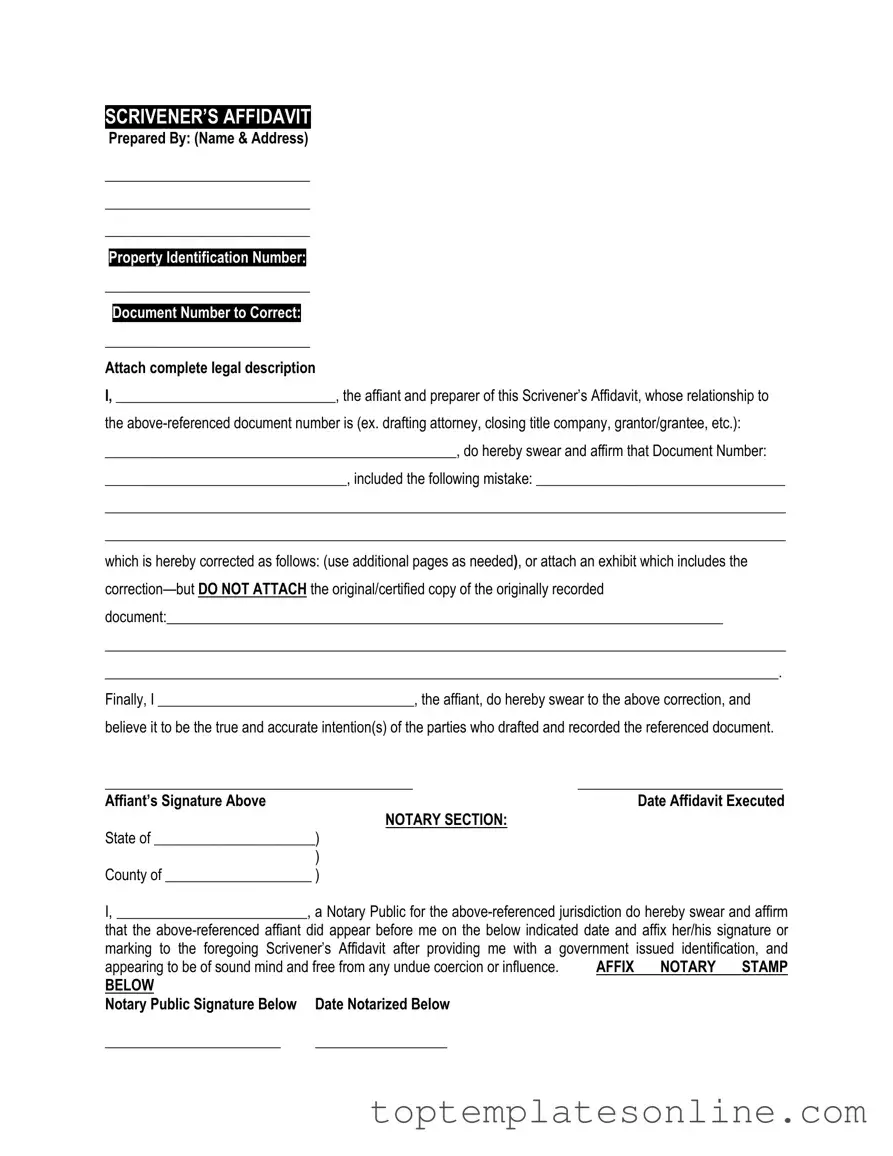Fillable Scrivener's Affidavit Form
The Scrivener's Affidavit is a legal document used to clarify discrepancies in recorded documents or to affirm the accuracy of a written instrument. This form serves as a statement made under oath by a scrivener, who is typically the individual responsible for drafting or preparing the document in question. Understanding its purpose and proper use can help ensure that legal documents are accurately represented and understood.
Customize Scrivener's Affidavit Here
